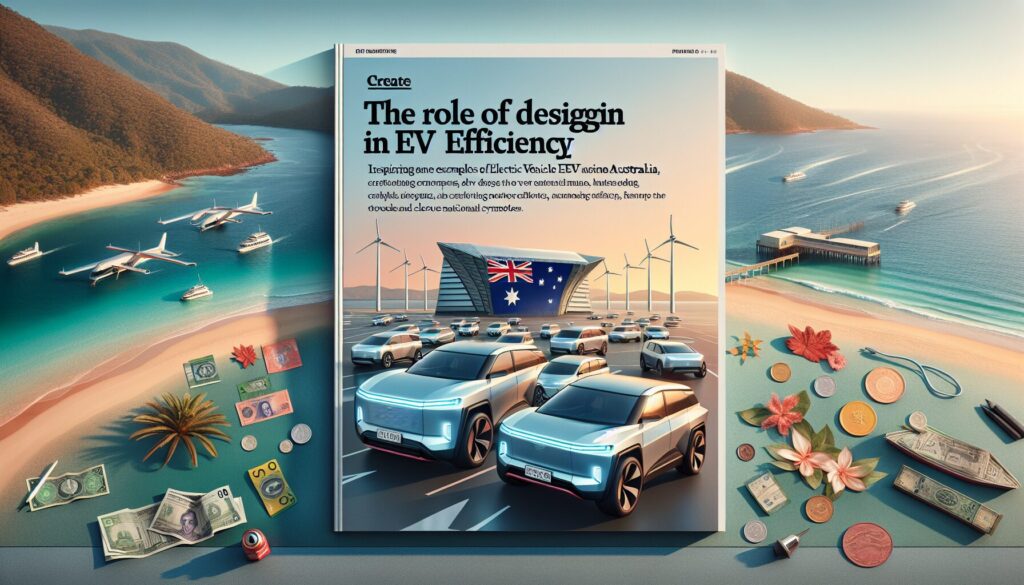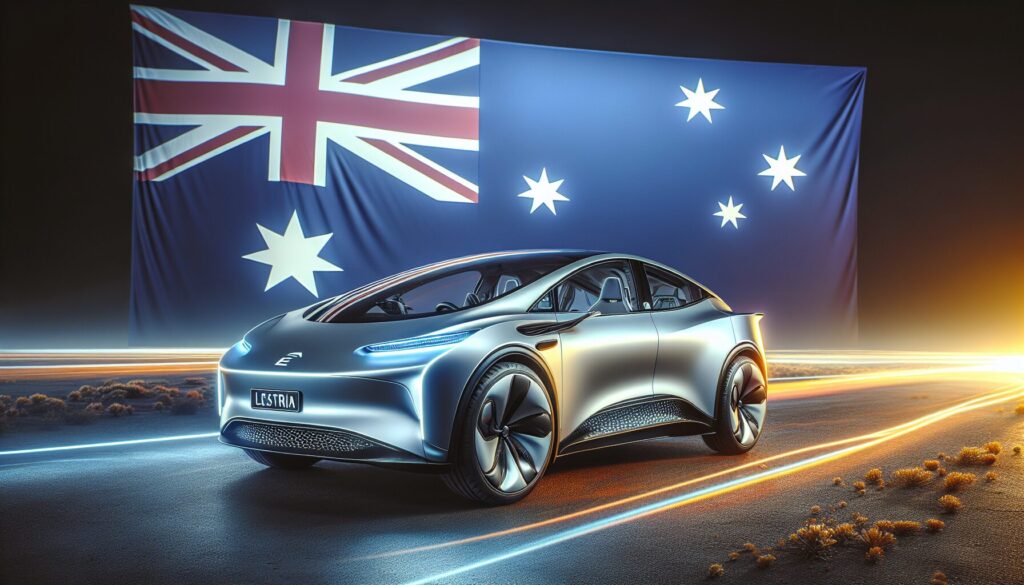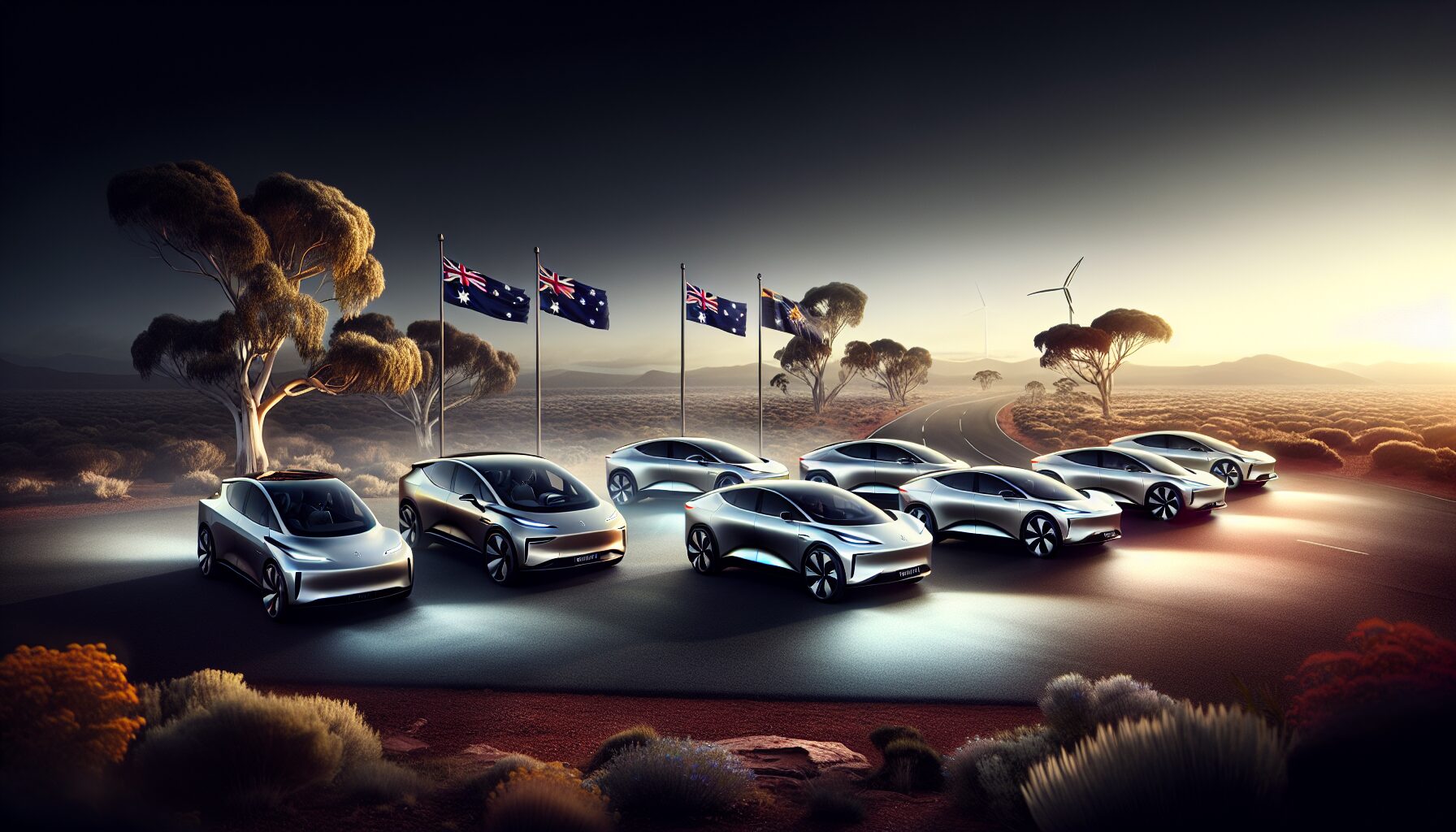Have you ever driven along the stunning Great Ocean Road, feeling the sea breeze as you hug those curves? Well, just like our bodies when we’re cycling against the wind, electric vehicles (or EVs) rely heavily on aerodynamics. This isn’t just about looking sleek. It’s about slicing through the air with minimal resistance, much like a swimmer gliding through water. Why’s this so crucial for EVs, you ask? It directly impacts their efficiency and range. The less drag, the less energy the car needs to maintain speed. This means your EV can travel farther on a single charge, which is pretty handy when you’re cruising through our vast Aussie landscapes. Plus, better aerodynamics can reduce noise and improve stability. It’s like having a trusty surfboard that cuts perfectly through the waves, ensuring a smoother and more enjoyable ride.
2. How Aerodynamics Affect Your EV's Range
Aerodynamics can be a real game-changer for your EV’s range. When you’re zipping along the highway, the shape and design of your vehicle play a huge role in how efficiently it slices through the air. Think of it like a sleek dolphin gliding effortlessly through water. A well-designed EV reduces air resistance, which means the motor doesn’t have to work as hard, and you can travel further on a single charge. It’s like having a tailwind helping you along the Great Ocean Road!
Now, let’s break it down a bit more. There are a few key ways aerodynamics impact your EV’s efficiency:
- Drag Coefficient: This is a measure of how easily your car moves through the air. Imagine it as how smoothly a boat moves through water. A lower drag coefficient means less resistance and more range.
- Design Features: Many EVs have special features like smooth underbodies or retractable door handles. These reduce drag and help you save energy.
- Speed: The faster you go, the more air resistance you face. It’s like riding a bike into the wind; slower speeds mean less drag.
Additionally, smart design isn’t just about energy efficiency; it’s also about enjoying the ride. Companies like Tesla and Hyundai have mastered the art of blending form with function. They’re not only creating cars that are beautiful to look at but also efficient to drive. So, next time you’re on the road, take a moment to appreciate the sleek lines and curves of your EV. They’re not just for show; they’re working hard to help you go the extra mile.
3. The Role of Design in EV Efficiency

Design plays a crucial role in making electric vehicles (EVs) zippier and more efficient on the road. It’s all about reducing drag, which is like cutting through butter with a hot knife. The sleeker the design, the easier it is for the car to move, saving energy and extending range. Every curve and angle of an EV is meticulously crafted to minimize air resistance. It’s fascinating to see how manufacturers are pushing boundaries to achieve this.
Take, for instance, the innovative designs from Tesla and Hyundai. These companies are not just about aesthetics; they’re engineering marvels. They combine style with substance, ensuring that every element serves a purpose. Factors like the shape of the chassis, the design of the front grille, and even the type of tires can impact how smoothly a car moves through the air.
Key Design Elements in EVs
Several elements come into play in EV design:
- Sleek body shapes: These reduce air drag, making the vehicle more efficient.
- Underbody panels: They create a flat surface underneath, which is crucial for reducing turbulence.
- Aero wheels and tires: These are designed to cut through the air more effectively.
Moreover, a Car Advice report highlights how these design choices are not just about style but significantly influence energy efficiency. It’s a dance between form and function, where every detail matters. As EVs become more prevalent on Australian roads, it’s exciting to see how these design innovations will shape the future of transport. Whether cruising down the Great Ocean Road or navigating city streets, these sleek machines promise a ride that’s both exhilarating and eco-friendly.
4. What Are the Top EV Models with Best Aerodynamics in Australia?
Australia’s electric vehicle scene is buzzing with models that are not only eco-friendly but also sport impressive aerodynamic designs. Let’s dive into the top EVs that are making waves Down Under with their sleek and efficient designs.
When it comes to cutting through the air with ease, the Tesla Model 3 stands out. This car is a masterclass in minimizing drag, which is like reducing the resistance you feel when you’re running against the wind. Its design ensures that air flows smoothly over its body, enhancing efficiency and performance. It’s no wonder the Model 3 is a favorite on Aussie roads.
The Hyundai Ioniq 5 is another contender that’s gaining popularity. This model blends retro charm with futuristic lines, creating a distinctive look that also optimizes airflow. The Ioniq 5’s smart design choices not only turn heads but also help it glide more efficiently, saving energy on those long drives along the coast.
Next up is the Polestar 2, a stylish EV that’s all about combining elegance with performance. Its sleek silhouette and smooth surfaces are engineered to reduce air resistance, much like a well-oiled machine. This ensures that the Polestar 2 delivers a ride that’s both smooth and energy-efficient.
Exploring More Aerodynamic Marvels
But the innovation doesn’t stop there. The Porsche Taycan, with its sporty design, is crafted to hug the road and slice through the air effortlessly. Its contours and curves aren’t just for show; they play a crucial role in its outstanding aerodynamics. The Taycan is perfect for those who crave speed without compromising on efficiency.
Another noteworthy mention is the Nissan Leaf, which has long been a staple in the EV world. The Leaf’s design has evolved to further improve its aerodynamic profile, making it a reliable choice for everyday Australian drivers. Its ability to move through the air with ease helps extend its range, making it a practical option for city and rural commutes.
For those interested in diving deeper into how these vehicles achieve their aerodynamic prowess, consider exploring our guide on electric vehicle aerodynamics optimization. It offers insights into the design principles that make these EVs so efficient on the road.
In the ever-evolving landscape of electric vehicles, these models prove that style and efficiency can go hand in hand. The focus on aerodynamics not only enhances performance but also contributes to a more sustainable future. Keep an eye on these models as they continue to shape the future of transportation in Australia.
5. How Aerodynamics Improve Your Driving Experience

When you think about driving, aerodynamics might not be the first thing that comes to mind. However, it plays a significant role in enhancing your overall driving experience, especially in electric vehicles (EVs). Imagine cutting through the air as smoothly as a surfer on a perfect wave. That’s what aerodynamics does for your car. It reduces drag, which is like a headwind pushing against you, making your ride more efficient and enjoyable.
One of the key benefits of improved aerodynamics is increased energy efficiency. With less air resistance, your EV uses less power to maintain speed. This means you’ll get more mileage out of a single charge—perfect for those scenic drives along the Great Ocean Road. Additionally, better aerodynamics contribute to a quieter cabin. The reduction in wind noise allows for a more peaceful and comfortable journey.
Enhanced Performance and Control
Improved aerodynamics also enhance stability and handling. Think of it like having a steady grip on the road. When your car slices through the air with ease, it stays more grounded, especially at higher speeds. This is particularly beneficial when you’re driving in windy conditions or on open highways.
Moreover, the streamlined design of modern EVs like the Tesla Model 3 and Hyundai Ioniq 5 doesn’t just look sleek—it boosts performance. By minimizing air turbulence around the car, these designs provide a smoother and more controlled driving experience. It’s like having a personal pit crew fine-tuning your ride for peak performance.
Whether you’re a daily commuter or an adventure seeker, the benefits of EV aerodynamics in Australia can’t be overstated. They make driving more efficient, enjoyable, and environmentally friendly. So next time you hit the road, remember your car’s sleek design is doing more than looking good—it’s making your journey better in every way.
6. Tips for Maximizing Your EV's Aerodynamic Benefits
Maximizing your EV’s aerodynamic benefits can make a noticeable difference on those long drives across Australia’s stunning landscapes. First off, keep your EV clean. Believe it or not, dirt can increase drag, much like how your car struggles more against the wind when it’s carrying a roof rack. Regular washes help your car glide more smoothly through the air. Remember, a cleaner car is a more efficient car!
Next, mind your speed. Driving fast is fun, but it can increase air resistance exponentially. Try maintaining a steady speed, especially on highways. Cruise control can be your best friend here, reducing the energy used to maintain speed. Additionally, check your tyre pressure. Under-inflated tyres create more drag, so keep them at the recommended levels for optimal performance.
Optimizing Your EV’s Features
Utilize your EV’s eco-mode. This feature adjusts the car’s settings to enhance efficiency, often by tweaking how the power is delivered and how the climate control operates. Speaking of climate control, be mindful of how much you’re using it. Heating and air conditioning can consume a significant amount of energy, impacting the car’s range.
Lastly, remove unnecessary weight. If your boot is loaded with items you don’t need for your journey, it’s time for a clean-out. Extra weight means more energy is needed to move the car. Each of these tips can contribute to better energy efficiency and may even boost your range a bit. By incorporating these practices, you can enjoy the open roads with the peace of mind that you’re making the most of your EV’s design.
Conclusion
To sum up, the importance of aerodynamics in electric vehicles cannot be overstated. From sleek designs that reduce drag to innovative features that enhance energy efficiency, EVs are transforming the driving experience while promoting sustainability. By optimizing these aerodynamic benefits, drivers can enjoy extended range, improved stability, and a quieter ride, all while contributing to a greener future on Australian roads. So, as you embark on your next journey, remember that every curve and angle of your EV is working hard to make your ride smoother and more efficient. Enjoy the drive, and happy cruising!
Continue Exploring
Ready to boost your EV's performance? Uncover the secrets to maximizing efficiency by steering clear of these common pitfalls.
Frequently Asked Questions
What are some examples of electric vehicle aerodynamics advancements in Australia?
Australia has been a hub for innovative advancements in electric vehicle aerodynamics. Some notable examples include streamlined body designs by Australian EV manufacturers, the use of lightweight materials to reduce drag, and the integration of advanced aerodynamic features such as active grille shutters and rear diffusers in locally produced EVs.
How do aerodynamic improvements impact the efficiency of electric vehicles in Australia?
Aerodynamic improvements significantly enhance the efficiency of electric vehicles by reducing air resistance, which in turn decreases energy consumption. In Australia, where long-distance travel is common, these enhancements lead to extended range, better battery performance, and reduced energy costs, making EVs more practical and appealing to consumers.
Why is aerodynamic design important for electric vehicles manufactured in Australia?
Aerodynamic design is crucial for electric vehicles manufactured in Australia because it directly affects their performance and efficiency. Given the vast distances and diverse climates in Australia, optimizing aerodynamics helps ensure that EVs can travel longer distances on a single charge, handle varying weather conditions effectively, and offer a quieter, more comfortable ride.


Leave a Reply